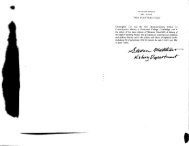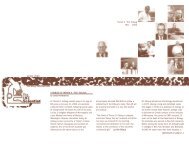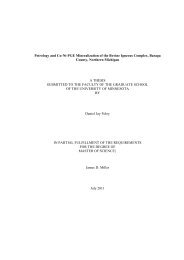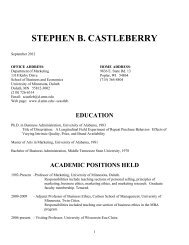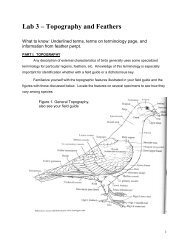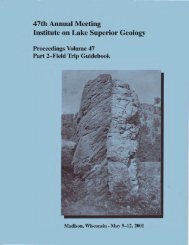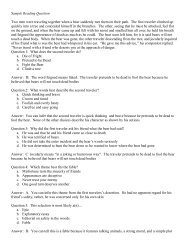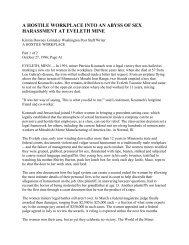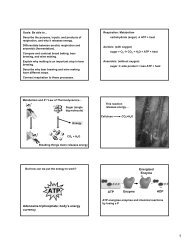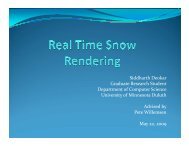Program, Abstracts, and Guidebooks - University of Minnesota Duluth
Program, Abstracts, and Guidebooks - University of Minnesota Duluth
Program, Abstracts, and Guidebooks - University of Minnesota Duluth
Create successful ePaper yourself
Turn your PDF publications into a flip-book with our unique Google optimized e-Paper software.
—95—<br />
(3) feldspars variably foliated;<br />
(4) mafic schlieren, the attitude ot which<br />
is conformable with the attitude <strong>of</strong><br />
layering;<br />
(5) gradation into more pegmatitic or<br />
porphyritic varieties.<br />
The laurvikites are primarily composed <strong>of</strong> perthitic<br />
feldspar, with variable amounts <strong>of</strong> aegirine—augite, olivine<br />
(up to Fa100), barkevikitic amphibole, biotite, iddingsite,<br />
quartz, zircon, fluorite <strong>and</strong> calcite. Variations in<br />
mineral compositions, <strong>and</strong> in the thermal histories <strong>of</strong><br />
alkali feldspars may be cyclic.<br />
2.4 Marathon turn—<strong>of</strong>f.<br />
0.0 Continue west on+Highway 17.<br />
2.3<br />
STOP 2 DARK GREEN LAIJRVIKITE - LAURVIKITE PEGMATITE (Fig. 1)<br />
4.7<br />
These rocks aresimilar to the laurvikites from<br />
Oslo. The perthites from the pegmatites are extensively<br />
exsolved, patch perthites, which are more sodic (Or27)<br />
than the less exsolved, braided perthites (Or62) from<br />
the less—pegmatitic, laurvikitic host.<br />
STOP 3<br />
CONTACT BETWEEN LAURVIKITE AND BASIC METAVOLCANIC<br />
XENOLITH. (Fig. 1 & 4).<br />
This section <strong>of</strong> the highway reveals a broad exposure<br />
<strong>of</strong> the contact phase <strong>of</strong> syenite which can be seen to grade<br />
into more normal laurvikite.<br />
The basic metavolcanic is basaltic in composition<br />
<strong>and</strong> comprises a portion <strong>of</strong> the so—called Coubran Lake<br />
metavolcanic cap. Although more commonly amygdular in<br />
appearance, fine grained to aphanitic phases are distributed<br />
in such a manner as to suggest the contacts are<br />
flat lying.<br />
The contact between the overlying basaltic cap <strong>and</strong><br />
the medium to coarse—grained, red coloured, hornblende—<br />
rich syenite is generally sharp <strong>and</strong> fragmented. The<br />
syenite, which is a hydrated equivalent <strong>of</strong> the laurvikite,<br />
contains abundant mafic clots, stringers, wisps <strong>and</strong><br />
veinlets from 2 to 6 inches in size. These 'enclaves',<br />
which are amphibolite or syenodioritic in composition,<br />
tend to be aligned parallel to the contact.<br />
fL.5<br />
STOP 4 TRA}ISITIONAL PHASE OF LAURVIKITE (Fig. 1).<br />
To the south similar rocks reportedly (Tuominen)




